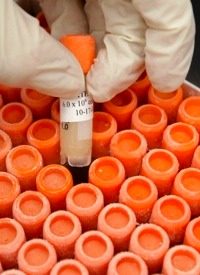
For starters, human embryos can now be used for all sorts of research funded by NIH money, as long as they are donated to science. The NIH says donors are to be informed as to what could possibly be done to their embryos, and they are supposed to be given the chance to donate said embryos to other couples. The NIH perceives nothing wrong in culling — as in, eliminating from the herd, the library, or the garden — unwanted or unused humans from lab supplies.
Cells obtained from cloning technologies, or egg-only technologies, are not eligible for federal funds. Although any research, experimentation, and destruction of human embryos — according to Webster’s Dictionary the definition of an embryo is a human “from conception to about the eighth week” — can be done using private money, no problem. And there are few restrictions or limitations on human embryos that may come from foreign countries — but possible abuses certainly come to mind.
These rules are the NIH’s version of “maintaining rigorous ethical standards,” as Dr. Raynard Kington, director of the NIH said. But he doesn’t view it as fair that “many of the lines already in existence may have met very rigorous standards of informed consent but may have been implemented in ways not consistent with the present guidelines. It’s unreasonable to retroactively apply procedures intended for future use.” If the lines were created under conditions that met the spirit but not the letter of the new rules, they will be approved anyway, Dr. Kington added.
So, older embryonic stem cell lines will have to be assessed by the NIH and its team of scientists and ethicists. But look for cell line usage to expand exponentially, given Dr. Kington’s attitude and loose interpretation of the already broad guidelines.
The creation of the new national registry is an effort to speed up the process of making human embryonic stem cells available for research and as a consequence of that research, for elimination. The California Institute for Regenerative Medicine’s senior officer for medical and ethical standards, Geoffrey Lomax, has stated that time and money were spent on trying to determine the ethical criteria for each embryonic stem cell line. The new database “creates a level of standardization that is extraordinarily helpful and it removes a lot of uncertainty," he said, cementing the notion that time and money are wasted on a moral issue, and now that there are few restrictions, they can cut to the chase a lot quicker.
But many ethical concerns for excess or leftover human embryos being so casually destroyed by the millions, won’t go away. And then there’s that little matter of the Dickey Amendment (or Dickey-Wicker Amendment).
The amendment prohibits the Department of Health and Human Services, of which the NIH is a part, from appropriating funds for the creation of life for research or in which human embryos are destroyed. Sec. 509 (a) states:
that none of the funds made available in this Act may be used for:
(1) the creation of a human embryo or embryos for research purposes; or
(2) research in which a human embryo or embryos are destroyed, discarded, or knowingly subjected to risk of injury or death greater than that allowed for research on fetuses in utero.
The NIH and other scientists and researchers are saying because the current issue is working with cells that were initially created using private money, the Dickey Amendment doesn’t apply. But it seems this mentality is a giant end run around the Dickey Amendment’s intent and purpose.
One Bostonian who oversees a stem cell transplantation program described the new guidelines as “science friendly,” but perhaps he should be reminded that the guidelines are not so very life friendly for the little ones trapped in a limbo-like state, and who will only know death in the end.
We have obviously all become rather desensitized to the destruction of human life — just look at the language in use for what is in actuality the murder of pre-born souls ex utero: culling, discard, excess, standardization, science, research, unused, etc.
At a time when the federal government is already spending several future generations into financial oblivion, it seems incomprehensible that $10 billion in stimulus money will be thrown at an expansion of a project that destroys human beings.



